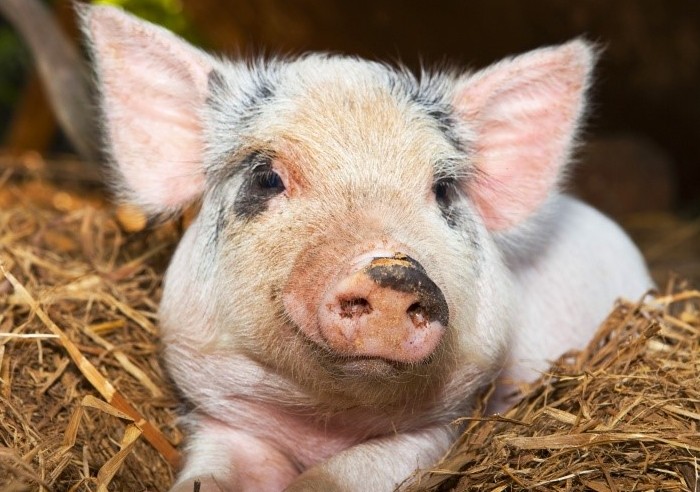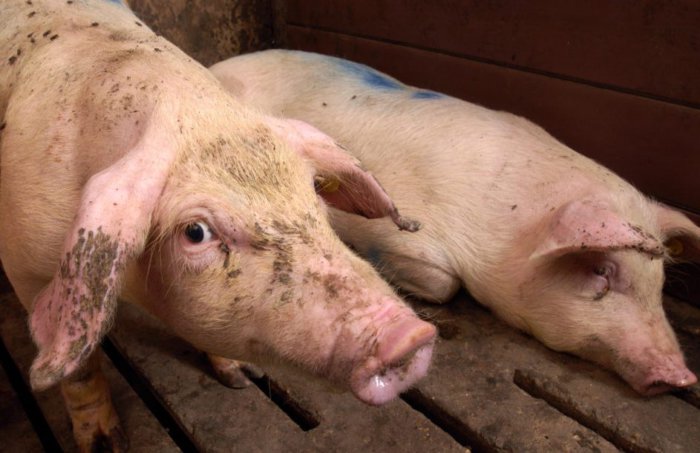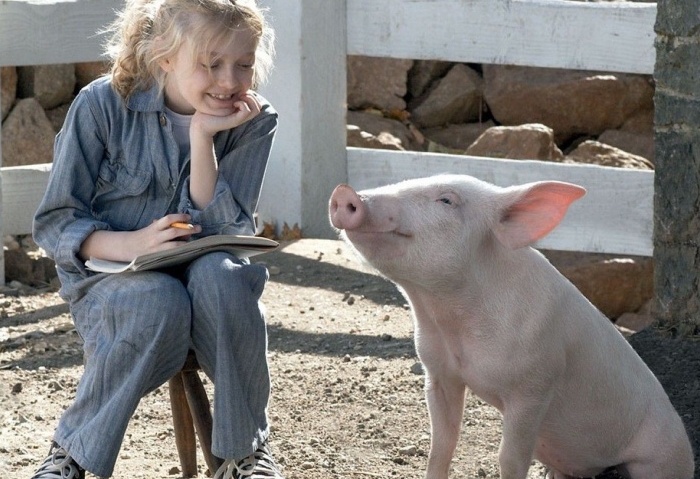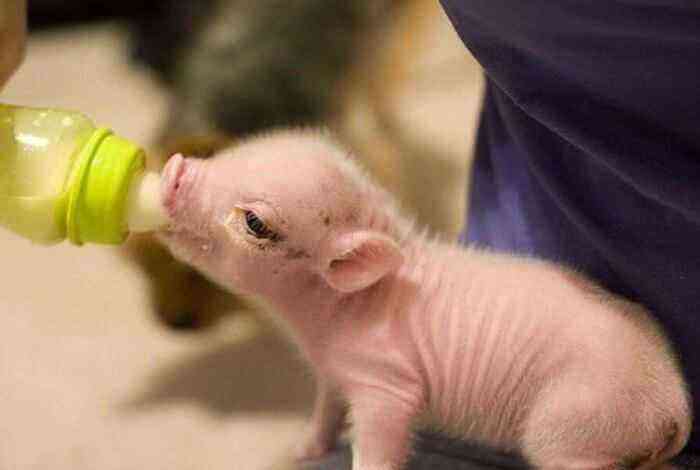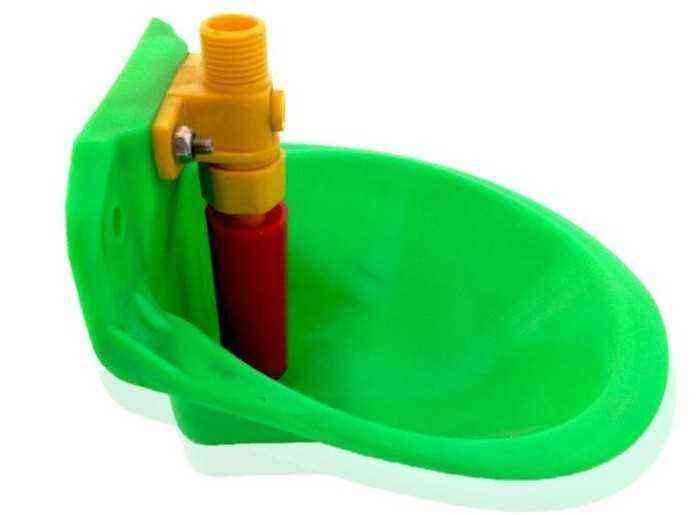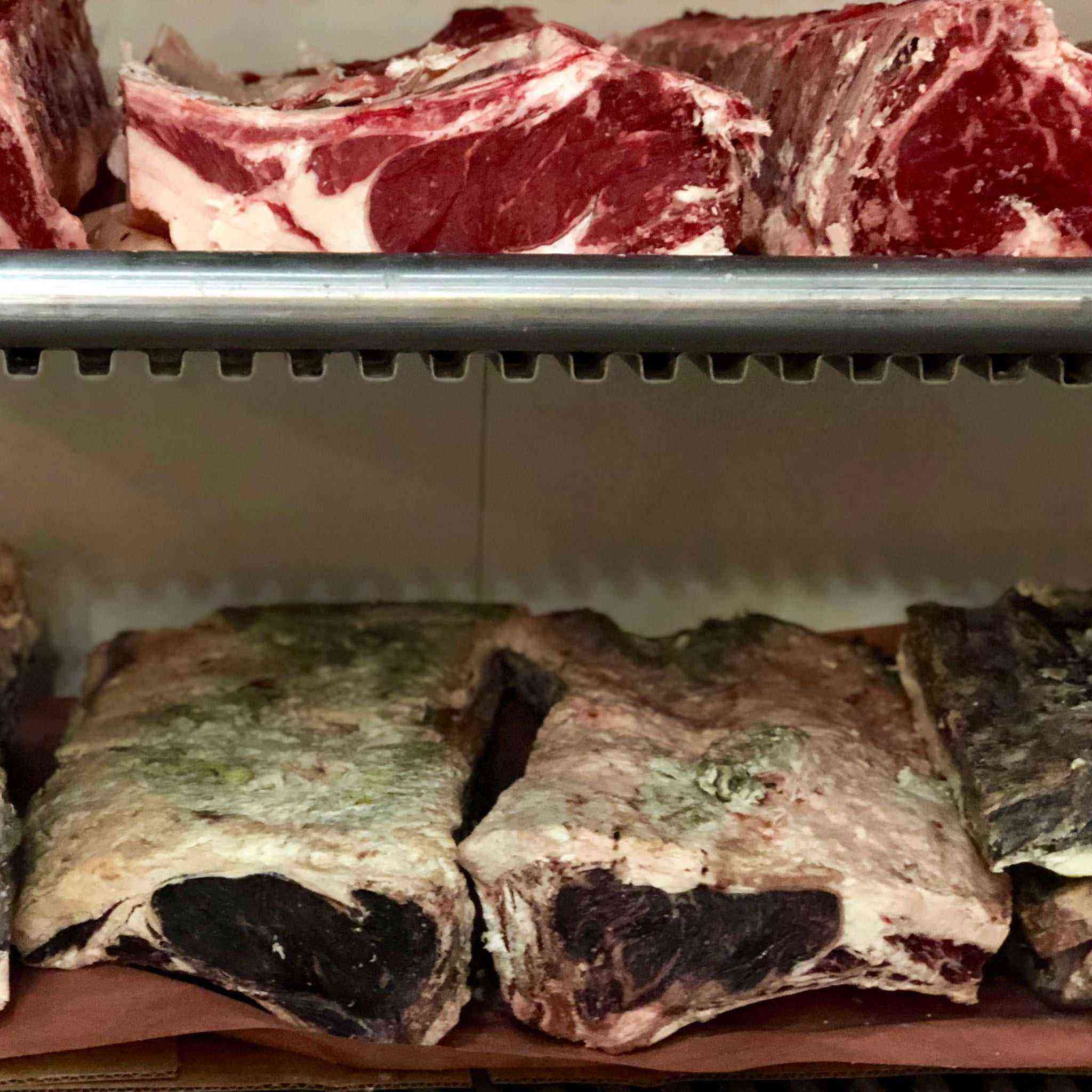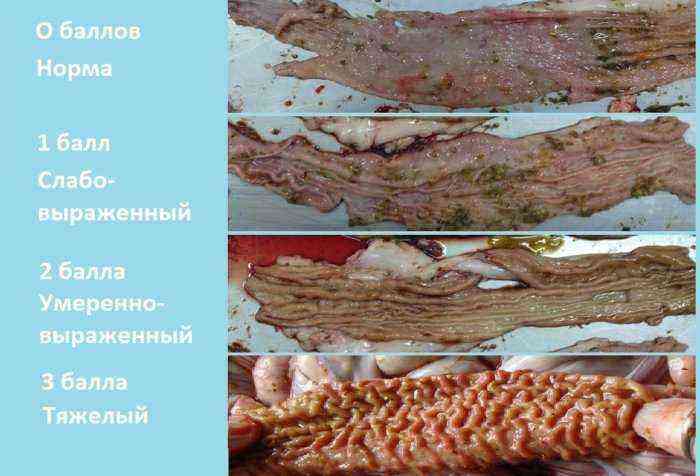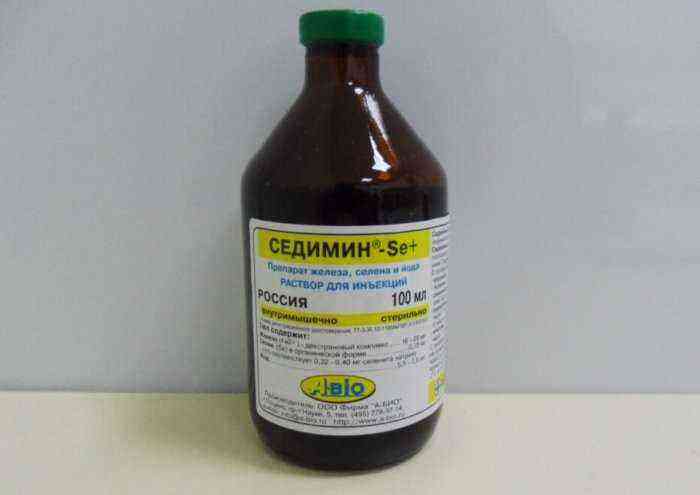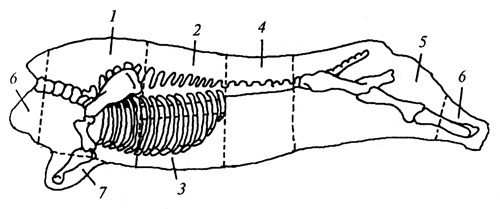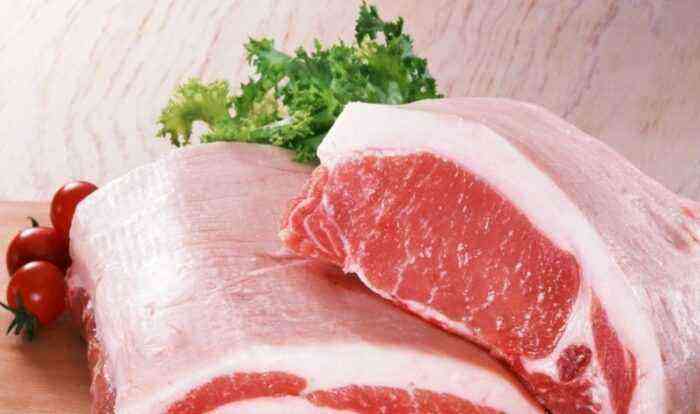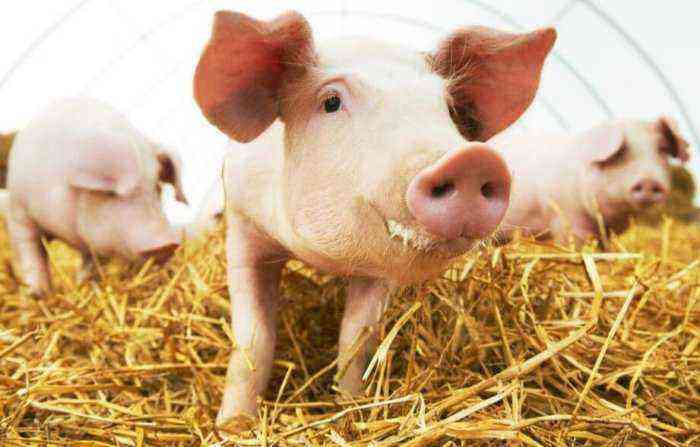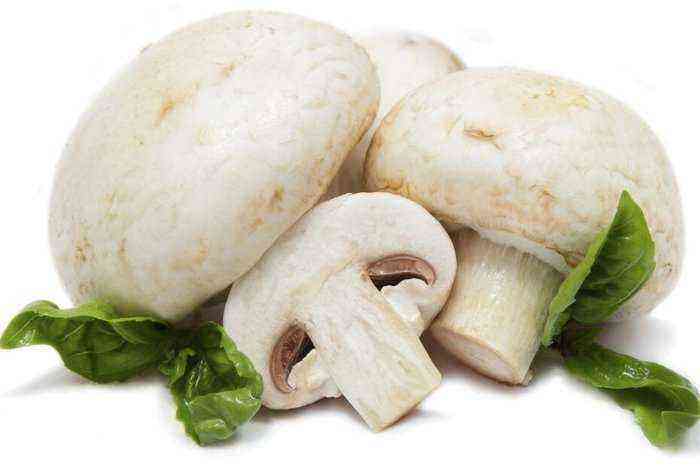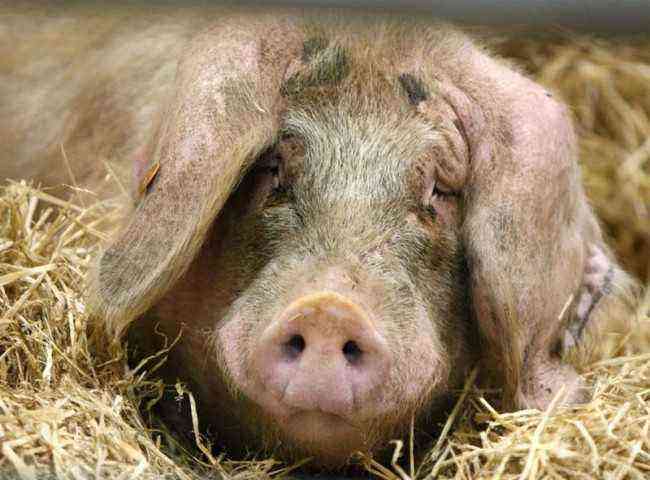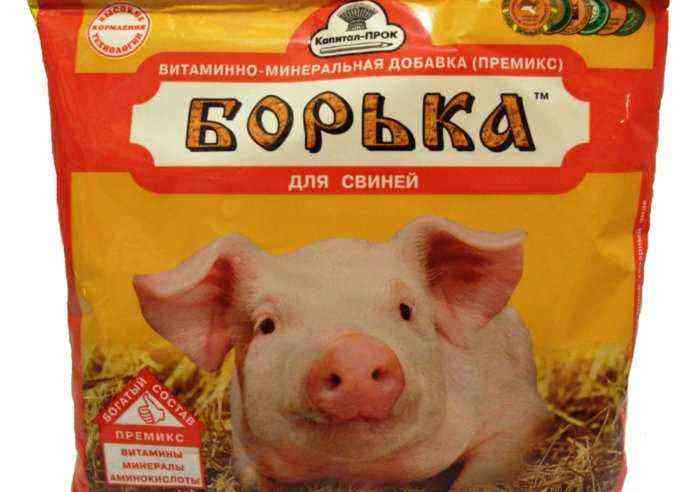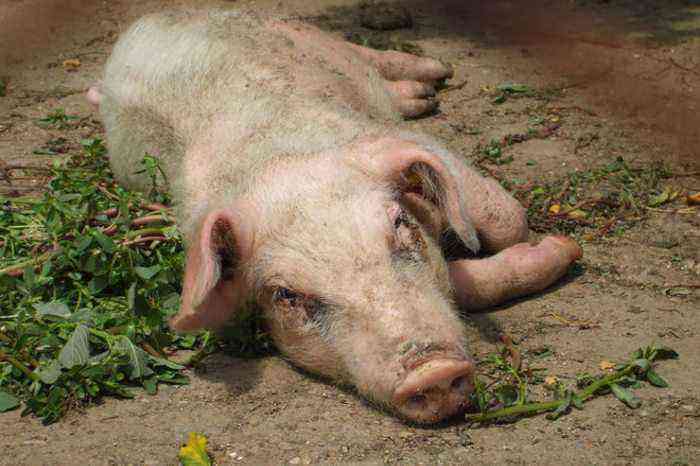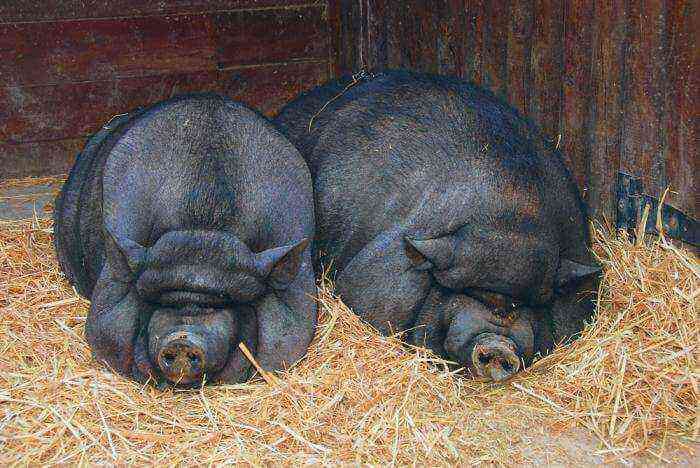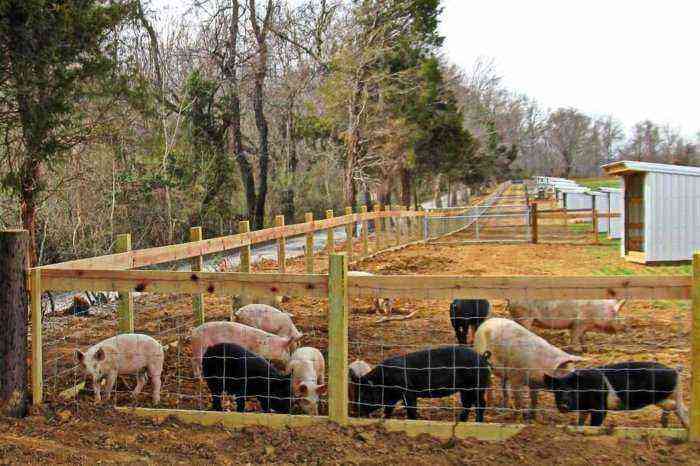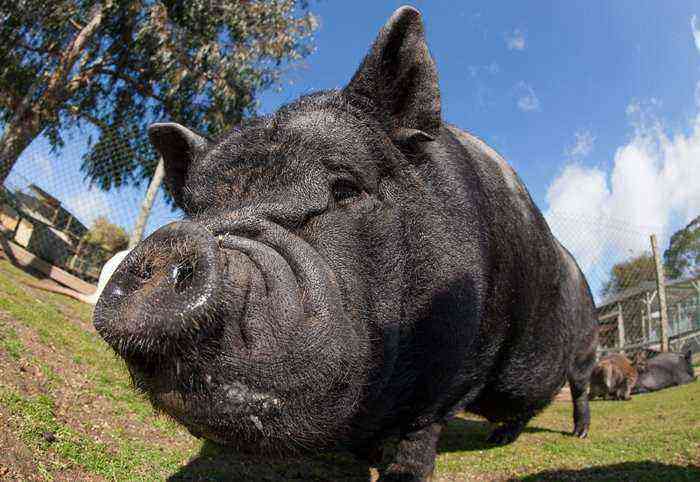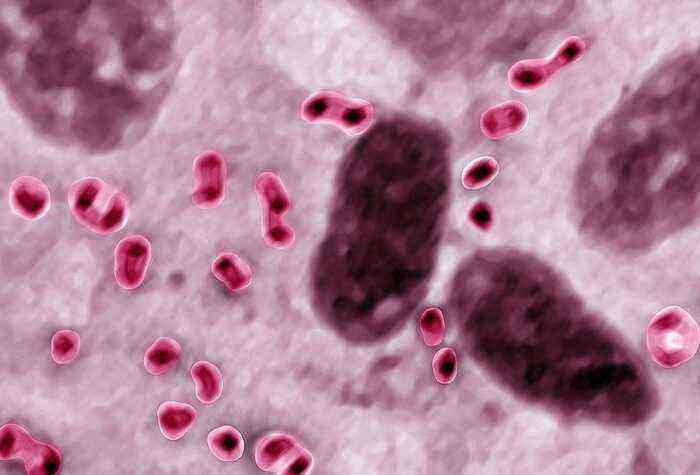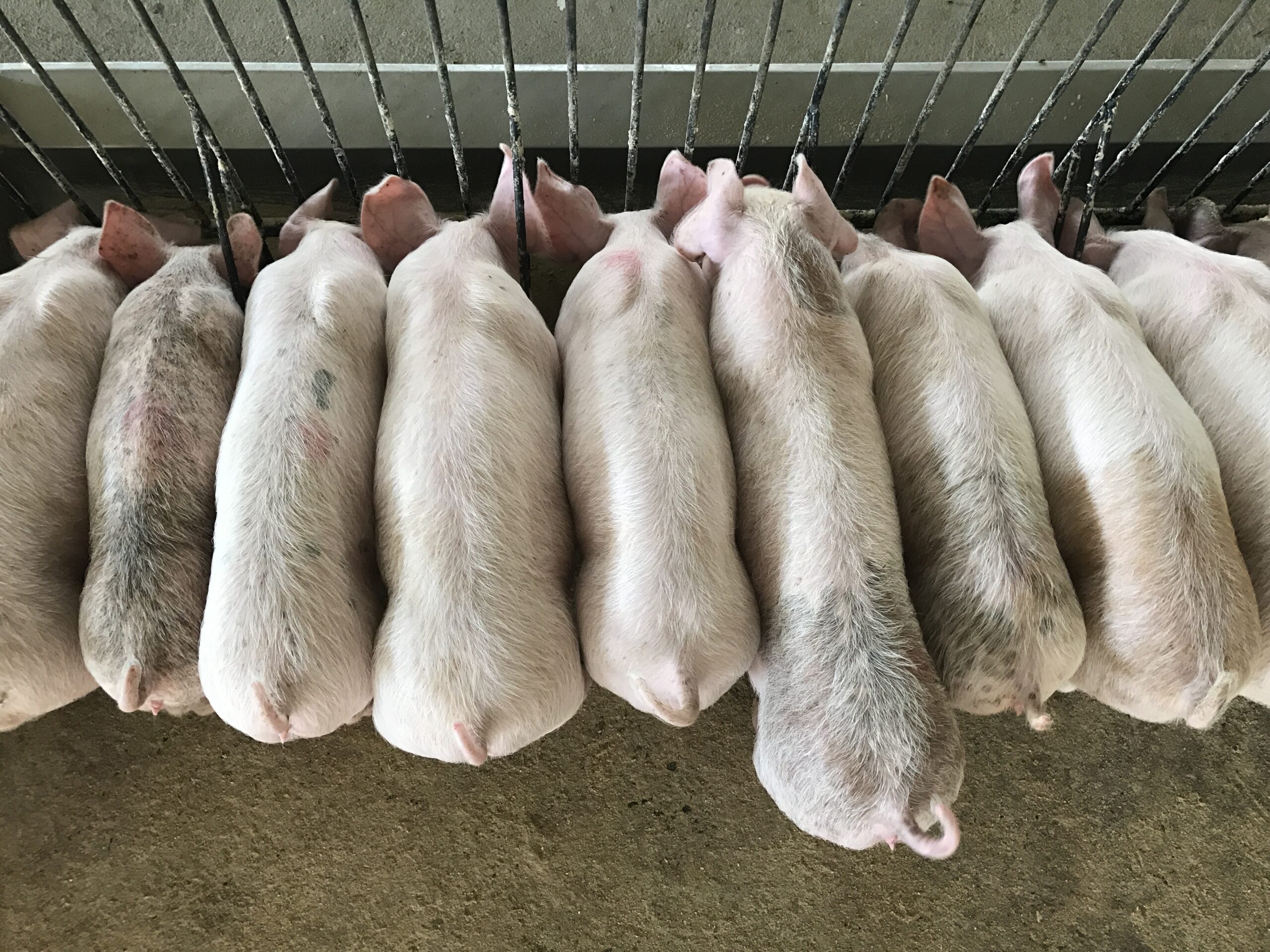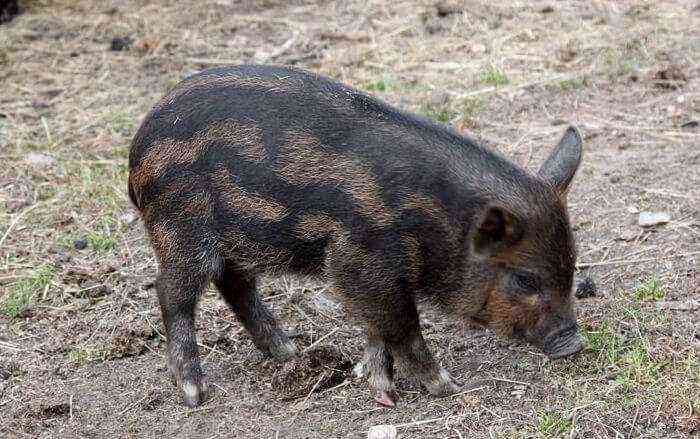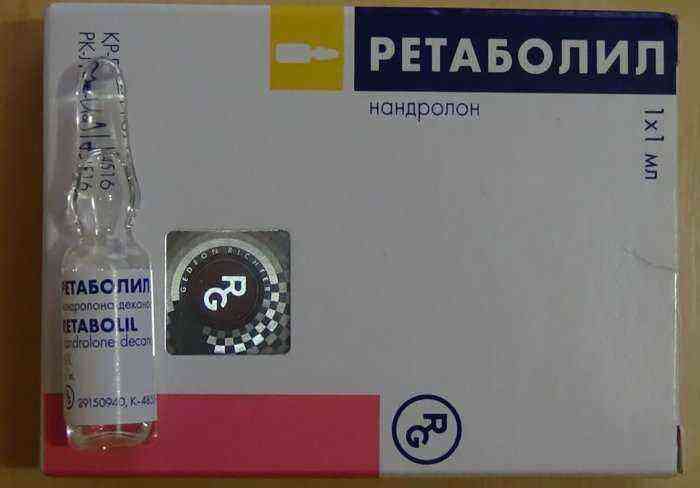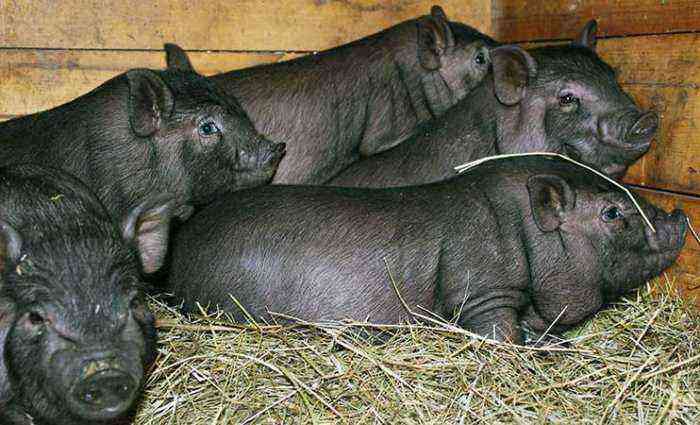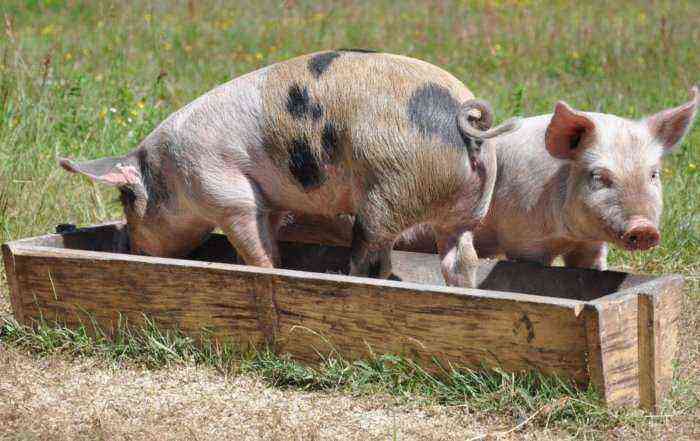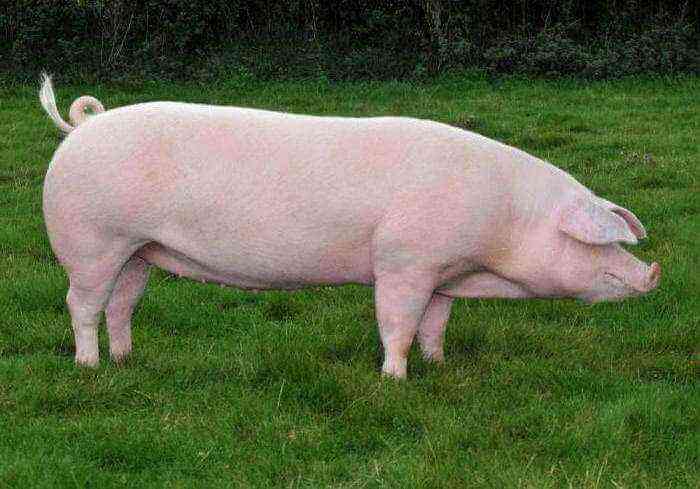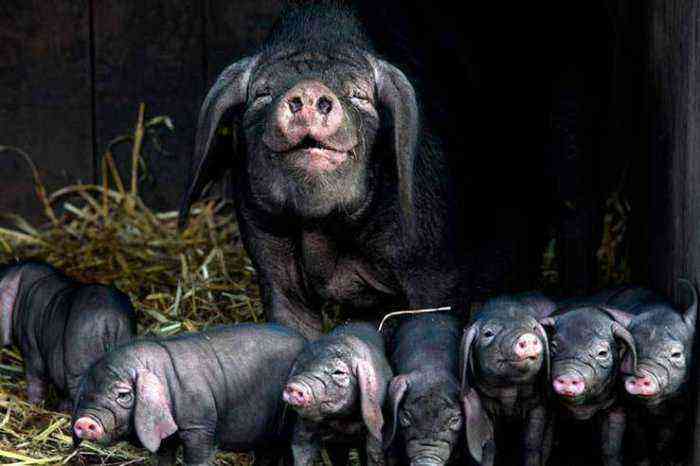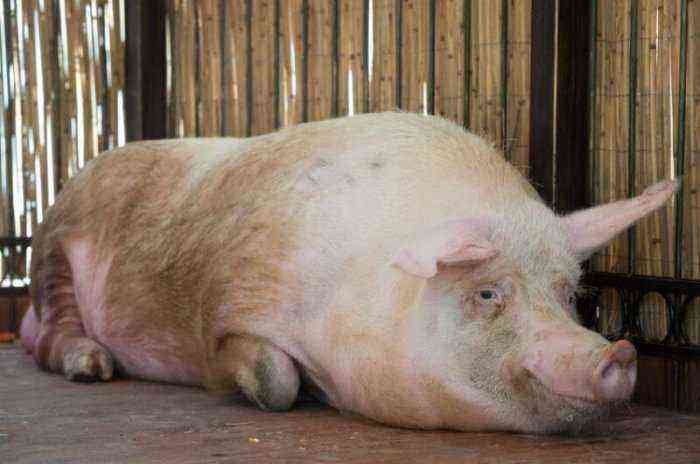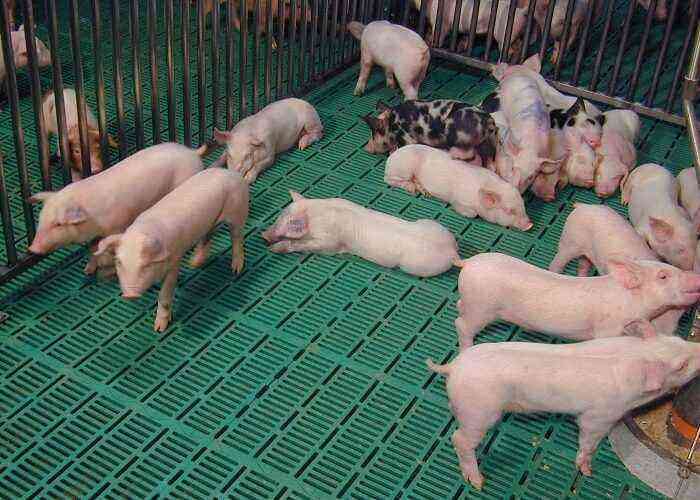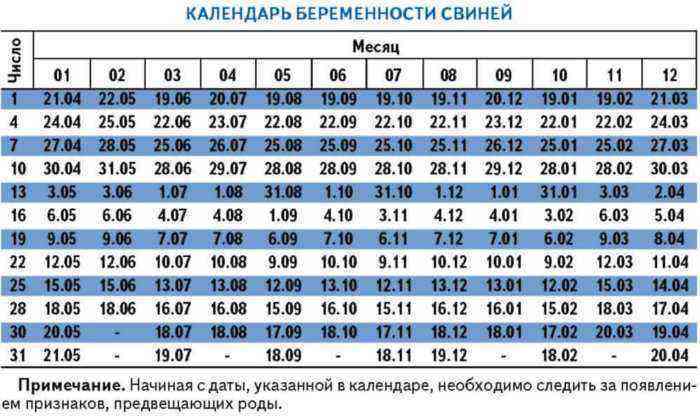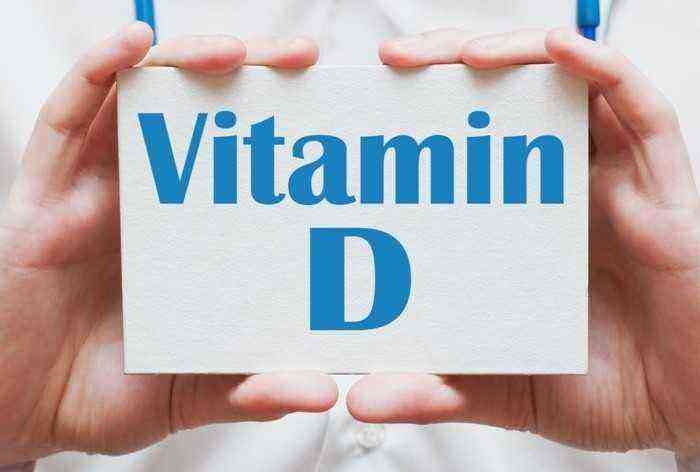There can be many reasons why a pig burps. But never in itself vomiting is not a separate disorder. Usually this is a symptom of some kind of ailment or malfunction of the internal organs of the animal. Always pay attention to concomitant symptoms – this will allow you to choose the right treatment or isolate the infected individual in a timely manner.
Sick piglets
Causes
Vomiting is usually just a sign of one of the many diseases your piglets may be suffering from. It can be both banal poisoning and dangerous viral infections: plague or flu. Therefore, when vomiting in animals, it is very important to establish the cause in a timely manner and take the necessary measures.
Flu
Suckling pigs are particularly susceptible to this disease. Its development leads to damage to the respiratory mucosa and fever. It is transmitted by airborne droplets. The incubation period lasts no more than 2 days.
Symptoms:
- body temperature rises sharply (up to 42 degrees);
- the animal is inactive, general lethargy is observed;
- appetite decreases or disappears completely;
- mucous discharge from the nose and eyes;
- sneezing and coughing;
- the formation of bluish spots on the limbs, ears and tail;
- animals constantly rub their heads against the fence in the paddock and other objects.
Plague
The disease proceeds in the form of fever with damage to the circulatory system. The causative agent is togavirus, which saturates the body of the animal with ribonucleic acid RNA. Critical accumulations of the substance in the vessels, liver, bone marrow and lymph cause internal hemorrhages with subsequent tissue necrosis. The first symptoms appear after 4-7 days.
Plague
Symptoms:
- elevated temperature – up to 42 degrees;
- subcutaneous hemorrhages occur mainly in the area of the ears, abdomen and thighs;
- general lethargy, lack of appetite.
Attention! The only effective method of combating the disease is the slaughter of all pigs in the infected area, followed by cremation. The farm is going into a quarantine regime for 40 days.
Exanthema vesicular
Acute infectious disease. The main source of spread is contaminated food. Then, already through the diseased individuals, the epidemic begins to cover the entire livestock. Individuals of all ages and groups are at risk: from dairy piglets to adult animals.
The first symptoms of the disease may appear after 2 weeks, or even after only 12 hours after infection.
Signs (primary phase):
- copious salivation;
- fever, general weakness;
- body temperature rises to 41-42 degrees;
- characteristic rash in the mouth and on the nickel in the form of small bubbles;
- serous discharge from burst vesicles.
Signs (secondary phase):
- the spread of the rash to the interdigital region and the corolla;
- lameness, lack of appetite;
- development of a panaritium with the subsequent subsidence of horn shoes.
Lameness as a symptom
Poisoning
Poisoning can be caused by a number of reasons:
- spoiled food:
- excessive salt intake;
- eating poisonous plants;
- pesticides;
- medicines.
Regardless of what exactly caused the poisoning, the symptoms always remain approximately the same:
- low body temperature – about 36 degrees (in rare cases, hyperthermia may occur);
- piglets stop eating;
- diarrhea and vomiting;
- in rare cases, pink spots form on the body;
- possible cyanosis in the lower abdomen and in the ears.
Salt poisoning is a particular danger and without timely seeking veterinary care can result in the death of the animal. Excessive water intake causes severe vomiting and frequent urination. High risk of dehydration and epileptic seizures.
Pneumonia
Usually, inflammation of the lungs in piglets is understood as enzootic viral pneumonia. At risk are individuals who have not reached the age of one month. However, there are cases of infection and older animals.
The virus is not susceptible to a number of antibiotics and is especially dangerous because a pig that has been ill can remain a carrier for another year. The incubation period ranges from 10 to 16 days.
Inflammation of the lungs in piglets
Symptoms:
- dry cough;
- hyperthermia in the region of 41 degrees, and sometimes higher;
- appetite is normal, but gains are minimal or absent altogether;
viral gastroenteritis
The causative agent of the disease is a coronary type virus with a high content of RNA. The disease proceeds in an acute form and affects the digestive system. It is equally dangerous for both young and adult individuals. At low temperatures, the aggressiveness of the virus increases.
For young piglets, the incubation period is 4 days, for adult pigs – a week.
Symptoms:
- increased water intake, unquenchable thirst;
- diarrhea of profuse type;
- severe vomiting;
- periodic increase in body temperature (in rare cases);
- general weakness, poor appetite.
Constipation
It can be an independent disease or a symptom of more complex ailments. The second option is usually accompanied by the presence of weakness and increased body temperature.
The main cause of development is an unbalanced or improper diet:
- feed is not the first freshness;
- excess feed;
- incompatibility of feed among themselves;
- the predominance of one type of food.
A blockage of the intestine can also be caused by a foreign body that the animal casually swallowed while walking.
Bloating
It is an excessive accumulation of gases in the gastrointestinal tract. It can be triggered by overeating or eating stale, fermented food.
Symptoms:
- decreased appetite;
- the abdomen is enlarged;
- active separation of saliva;
- restless behavior.
Diarrhea
Often this is an independent disease, which is essentially a dysfunction of the digestive system. However, it can also act as a symptom of more dangerous diseases. Before starting treatment, it is necessary to establish what caused the disorder.
Digestive disorder
Evidence
- frequent, loose stools (the piglet has a dirty ass);
- poor appetite:
- dehydration (the animal is constantly thirsty).
Symptoms
Symptoms that accompany vomiting in young animals vary depending on the specific disease. Yes, and vomiting itself, as a rule, is a symptom of something more or less serious.
If a piglet burps frequently and violently, it could be anything from simple bloating to aggressive infectious diseases. In the first case, it will be enough to simply review the composition of the diet and replace some feeds. In the second, intensive care or even the slaughter of the entire livestock may be required.
Important! It is necessary to consider all the symptoms that have manifested in the complex, and not focus on the vomiting alone.
Treatment
- Flu. symptomatic treatment. There are no methods of therapy, as such.
- Plague. Treatment is not provided. All livestock that has fallen into the zone of infection is subject to slaughter.
- Vesicular exanthema. Talker feeding, drinking plenty of water, thick bedding. Prescribing antibacterial agents.
- Poisoning. Gastric lavage through a probe. Animals receive milk, mucous decoctions, laxatives.
- Pneumonia. There is no specific therapy. Piglets are given large amounts of oxytetracycline and tetracycline every day.
- Viral gastroenteritis. Symptomatic therapy.
- Constipation. Carrying means, making changes in the diet, drinking plenty of water. In rare cases (blockage) – surgery.
- Bloating. A minimum of products capable of fermentation, a decrease in nutrition in general. Medicines for bloating. Massage in the abdomen.
- Diarrhea. Warm, soft bedding, limited diet. In rare cases, drug therapy is used.
piglet treatment
Prevention
- Flu. Culling of sick young animals. Regular disinfection of the pigsty. Quarantine for new piglets.
- Plague. Pigsty disinfection. Vaccination.
- Vesicular exanthema. Keeping animals in strict accordance with sanitary standards. As part of the diet, only proven, high-quality feed.
- Poisoning. Diet control. Normalized distribution of feed. Grazing in a specially designated fenced area. Maintaining cleanliness in the pigsty.
- Pneumonia. Spacious pigsty (animals should have enough space in the corral). Regular walking in summer and winter.
- Viral gastroenteritis. Sending new individuals to quarantine. Veterinary and sanitary conditions for keeping animals must correspond to at least a satisfactory level.
- Constipation. Normalization of feeding. Grazing only in proven places.
- Bloating. The correct balance of feed in the diet.
- Diarrhea. Normal percentage of dry matter content per unit of feed. Meals strictly according to the schedule.
Conclusion
If one or more of your piglets is vomiting, this is an occasion to call the veterinarian. The specialist will be able to quickly diagnose and choose the best method of treatment. It must be remembered that vomiting is only a symptom. By itself, without proper participation on your part, it will not pass.


